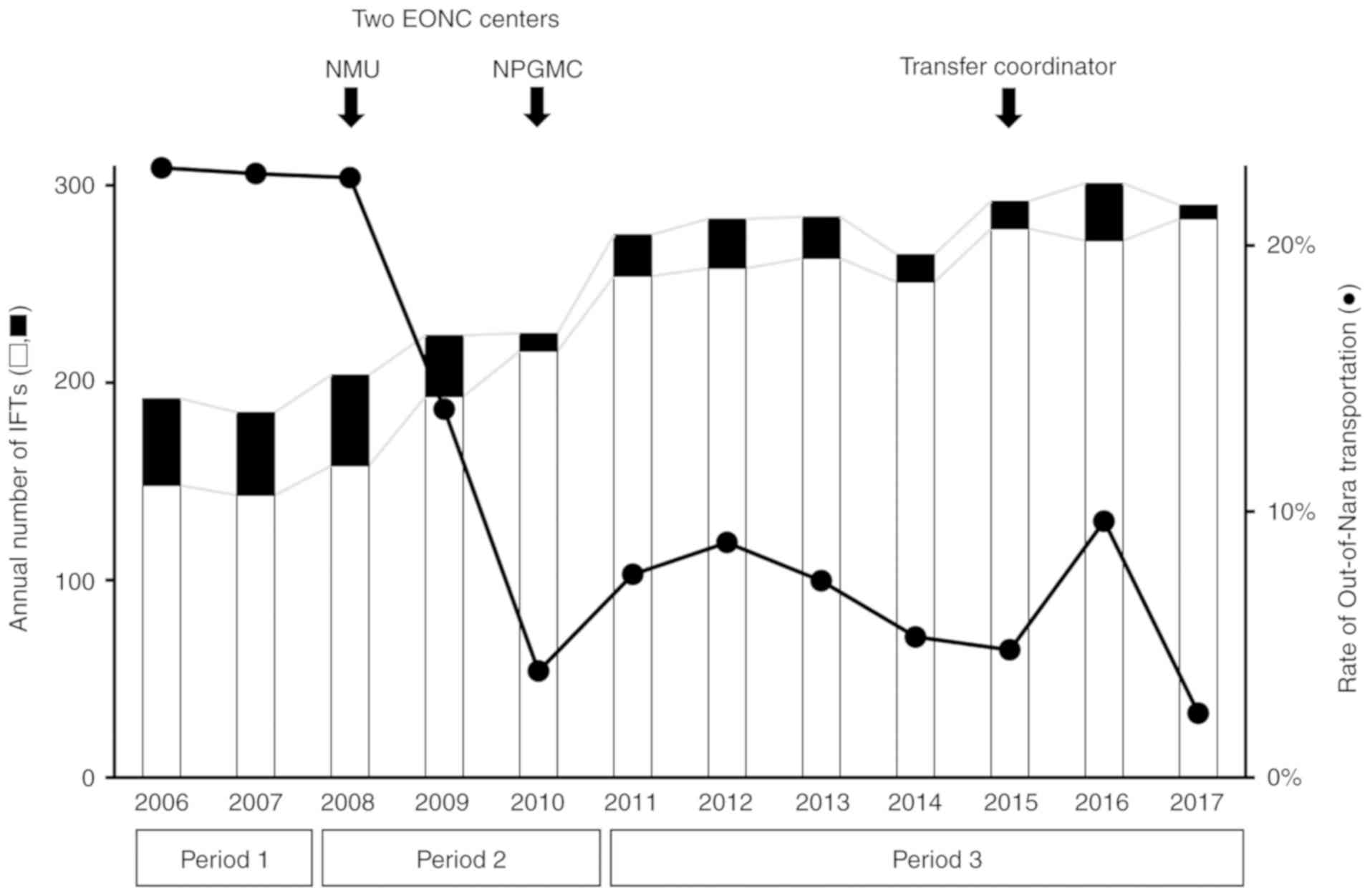Impact of reorganized interfacility transfer on emergency obstetric care in Nara prefecture, Japan
- Authors:
- Published online on: September 3, 2019 https://doi.org/10.3892/wasj.2019.20
- Pages: 192-200
Metrics:
Total
Views: 0 (Spandidos Publications: | PMC Statistics:
)
Total PDF Downloads: 0 (Spandidos Publications: | PMC Statistics:
)
Abstract
The aim of this study was to assess the impact of interfacility transfers (IFTs) and medical coverage of complicated obstetric cases at emergency obstetric and neonatal care (EONC) centers. This is a retrospective time series study using a longitudinal design between January, 2006 and December, 2017 in Nara Prefecture, Japan. The Council for Perinatal Care (CPC) Committee set up and reorganized two EONC centers in Nara Medical University (NMU) Hospital in 2008 and Nara Prefecture General Medical Center (NPGMC) Hospital in 2010, coupled with an efficient coordination using telephone‑based services by a transfer coordinator. The timespan was divided into three periods according to the reorganization date, 2006‑2007 (before reorganization, Period 1), 2008‑2010 (one reorganization, Period 2) and 2011‑2017 (two reorganization and established coordinated protocols, Period 3). There were 3,020 IFTs during the study period. The IFT rate significantly increased from 1.6% (Period 1) to 2.7% (Period 3) (P<0.05). A significant decrease in the Out‑of‑Nara transfer rate was observed, ranging from 22.8% (95% CI 21.5‑24.2) in Period 1 to 13.5% (95% CI 9.6‑36.5) in Period 2 and 6.6% (95% CI 4.2‑8.9) in Period 3 (P<0.05). The most common reason for IFTs to the EONC centers was preterm labor (36.7%). Maternal death and perinatal mortality rate are rare events and exhibited no significant differences between the time periods. The combination of the reorganization of two EONC centers and the implementation of an efficient coordination by a transfer operator is imperative for the successful management of IFTs.











